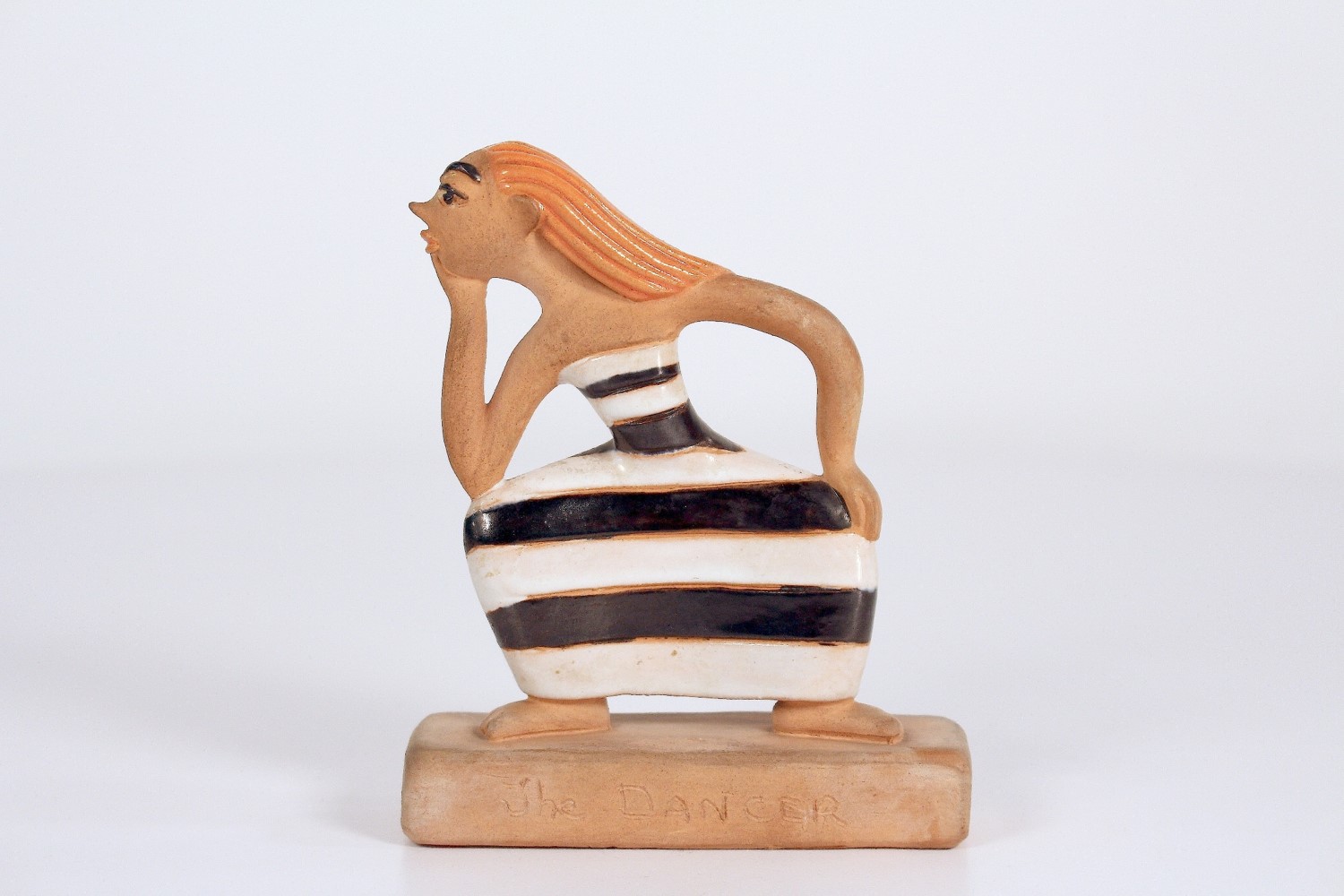Sorcha Boru (1900-2006) was an American ceramist from the San Francisco bay area. Born Claire Everett Jones, she used Sorcha Boru as her studio name in an homage to her Gaelic heritage. Throughout her career, Boru worked in multiple studios in the California bay area, including one at the Allied Arts Guild in Menlo Park and one in San Carlos. Boru’s Art Deco ceramics were small in scale, often in the form of miniature figurines, salt and pepper shakers, or chess sets. Much of her work was exhibited at major museums across the United States, and in 1940, she contributed The Dancer to the ninth Ceramic National exhibition at the Syracuse Museum of Fine Arts (today the Everson Museum). The November 11, 1940 issue of Life magazine included the article “American Artists Kick up Their Heels at Syracuse Ceramic Show” discussing the small figurative works in the exhibition. In a telegram-interview with the magazine, Boru humorously noted the delicate nature of working with a kiln, stating, “I started pottery in old chicken coop. It burned down. Built small studio. Burned down. Present studio insured. Waiting for fire.” Boru’s sense of humor is equally noticeable in her ceramic work. Commenting on The Dancer, she stated that it could be a parody of dancer Martha Graham’s characteristic style. Graham was a prolific early twentieth century dancer and is often considered a Pablo Picasso of modern dance. Boru’s figurine captures the important, avant-garde nature of Graham’s work. With a stoic gaze and flowing hair, the figure awkwardly stands with legs askew and her arms resting unnaturally on her thighs. The figure’s striped dress wraps around her small torso, but is drastically stretched to cover her legs. Using clay in a light-hearted manner, Boru captures the strange and beautiful aesthetic pursuit of modern dance. The Dancer is currently on view in Key Figures: Representational Ceramics 1932-1972 through June 23, 2019.
-Maggie Teschler, Curatorial Intern


